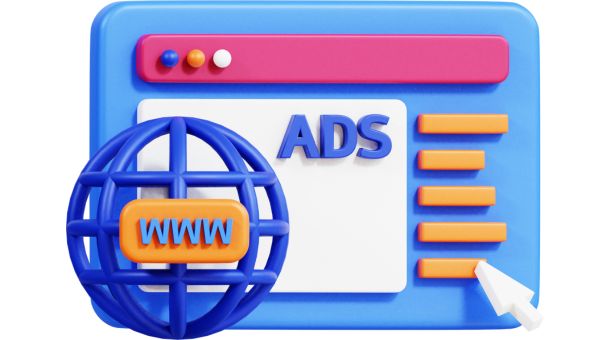In today’s digital age, businesses continually seek ways to reach and engage their target audience. Google Display Ads have become an essential tool for marketers, allowing businesses to showcase their products and services to a vast audience across the web.
With Google Display Ads, businesses can create visually appealing ads that capture the attention of potential customers and drive traffic to their websites. In this article, we’ll explore how Google Display Ads drive marketing results and provide expert management services to help businesses optimize their ad campaigns for better results.
What is Google Display Ads and how does it work?

Google Display Ads is an advertising platform that allows businesses to create visually appealing ads and display them across Google’s vast network of partner websites, apps, and video content. With Google Display Ads, businesses can target specific audiences based on demographics, interests, and behaviors, effectively reaching potential customers.
When a business creates a Display Ad, it is placed on Google’s network of partner websites and apps, which includes millions of websites and apps worldwide. When users visit a website or app that is part of the network, they may see the ad displayed on the page. The ad can be in an image, video, or text-based format and may be placed at different locations on the page.
Google Display Ads uses various targeting options, such as keywords, placements, topics, interests, demographics, and remarketing, to show ads to the right audience. Advertisers can also track their ad performance using analytics tools provided by Google, allowing them to make data-driven decisions and optimize their ad campaigns for better results.
How do Google Display Ads target audiences effectively?
Google Display Ads offers various targeting options that enable businesses to reach their target audience effectively. One of the most effective targeting options is remarketing, which allows businesses to show ads to people who have previously visited their website. This type of targeting is based on user behavior and effectively reaches people who have already shown an interest in the business.
Another effective targeting option is contextual targeting, which involves placing ads on websites relevant to the ad’s content. This targeting option uses keywords, topics, and other contextual signals to identify relevant websites for the ads. This targeting effectively reaches people actively engaged in topics related to the business’s offerings.
Google Display Ads also offer demographic and geographic targeting options that allow businesses to reach specific groups of people based on their age, gender, location, and other demographic factors. This targeting effectively reaches people who fit the business’s ideal customer profile.
How do Google Display Ads measure and analyze marketing performance?

Google Display Ads offers several tools for measuring and analyzing marketing performance. One of the most useful tools is Google Analytics, which provides in-depth insights into website traffic and user behavior. By integrating Google Analytics with Google Display Ads, businesses can track how many clicks, impressions, and conversions their ads generate.
Another useful tool is Google Ads reporting, which provides data on ad performance, including impressions, clicks, click-through rates, and conversion rates. This data can be used to measure the effectiveness of different ad campaigns and identify improvement areas.
Google Display Ads also offer conversion tracking, which enables businesses to track specific actions users take after clicking on an ad, such as making a purchase, filling out a form, or signing up for a newsletter. Conversion tracking provides valuable insights into how effective ads drive sales and other valuable actions.
How can businesses optimize their Google Display Ads for better results?
Businesses should focus on several key areas to optimize their Google Display Ads for better results. First, it’s essential to ensure that the ads are visually appealing and engaging to capture the attention of potential customers. This can be achieved using high-quality images and videos, clear messaging, and strong calls to action.
Second, businesses should focus on targeting the right audience. This can be achieved by combining targeting options such as remarketing, contextual targeting, demographic targeting, and interest-based targeting. By reaching the right people, businesses can improve ad performance and increase the likelihood of conversions.
Third, businesses should consider using A/B testing to test different ad variations to see which performs best. Businesses can optimize their ad campaigns for better performance and higher ROI by testing different ad formats, messaging, and targeting options.
Fourth, businesses should ensure that their landing pages are optimized for conversions. This can be achieved by using clear messaging, strong calls to action, and easy-to-use forms. By improving the user experience on landing pages, businesses can improve conversion rates and drive more sales.
Finally, regularly tracking and analyzing ad performance is essential to identify improvement areas. Using tools such as Google Analytics and Ads reporting, businesses can gain insights into ad performance and make data-driven decisions to optimize their ad campaigns for better results.
How do Google Display Ads compare to other forms of digital advertising?
| Advertising Channel | Advantages | Disadvantages |
| Google Display Ads | – Wide reach <br> – Effective targeting options <br> – Wide range of ad formats | – Can be expensive <br> – Can be difficult to create effective ads |
| Search Engine Marketing (SEM) | – Targeted to people actively searching for related keywords <br> – Cost-effective <br> – Easy to track ROI | – Limited reach <br> – Can be competitive for popular keywords |
| Social Media Advertising | – Wide reach <br> – Targeting based on user interests and behaviors <br> – Wide range of ad formats | – Ad fatigue for frequent users <br> – Can be expensive for popular audiences |
| Email Marketing | – Direct communication with customers <br> – Personalized messaging <br> – Cost-effective | – Risk of emails being marked as spam <br> – Limited reach |
| Influencer Marketing | – Authentic promotion from trusted sources <br> – Reach a highly engaged audience <br> – Cost-effective for small businesses | – Can be difficult to find the right influencer <br> – Difficult to track ROI |
Remember that each advertising channel’s effectiveness can vary depending on the business, industry, and target audience. Testing different channels and strategies is important to find what works best for your specific needs.
How can businesses stay up-to-date with the latest trends and changes in Google Display Ads?

To stay up-to-date with the latest trends and changes in Google Display Ads, businesses can take the following steps:
Follow Google Ads updates: Google regularly releases updates and changes to its advertising platform, including Display Ads. By following the official Google Ads blog and social media accounts, businesses can stay informed of the latest changes and updates.
Join industry groups and forums: Joining industry groups and forums can provide valuable insights and discussions on the latest trends and best practices in digital advertising. LinkedIn, Reddit and Facebook groups are all great places to start.
Attend industry events and conferences: Attending industry events and conferences, both online and in-person, can provide valuable networking opportunities and insights into the latest trends and developments in digital advertising. Google Ads and digital marketing conferences are a great way to stay informed and network with other professionals.
Invest in ongoing education: Digital advertising is constantly evolving, and investing in ongoing education is essential to stay up-to-date. Online courses, certifications, and webinars can provide valuable insights and skills to improve advertising campaigns and stay ahead of the competition.
Hire an expert: Working with a digital advertising expert can provide businesses with the latest insights and best practices in Google Display Ads. An expert can help optimize campaigns, implement new strategies, and stay ahead of the competition.
Can Google Display Ads work for any type of business or industry?
Yes, Google Display Ads can work for any business or industry. The wide range of targeting options in Google Display Ads makes it possible to reach various audiences, including those interested in specific products, services, or industries.
However, the effectiveness of Google Display Ads can vary depending on factors such as the industry, target audience, and competition. For example, businesses in highly competitive industries may find it more challenging to achieve a high ROI from Google Display Ads due to the higher cost per click and competition for ad space.
In addition, businesses with niche or highly specific audiences may find it more challenging to effectively target their ideal customers through Display Ads. In such cases, a combination of targeting options, contextual targeting and remarketing may be necessary to reach the desired audience.
Ultimately, the success of Google Display Ads for a particular business or industry will depend on factors such as the campaign’s goals, the target audience, the messaging and creatives used in the ads, and the optimization of the campaign. It’s important to regularly test and optimize campaigns to achieve the best results from Google Display Ads.
How do Google Display Ads benefit businesses in driving marketing results?
Here are some of the ways that Google Display Ads can benefit businesses in driving marketing results:
- Wide reach
- Effective targeting options
- Cost-effective
- Wide range of ad formats
- Measurable results
- Brand awareness
What are some common mistakes to avoid when running Google Display Ads?
Here are some common mistakes to avoid when running Google Display Ads:
- Poor targeting: Display Ads offer various targeting options, but businesses must use them effectively to reach the right audience. Poor targeting can result in low-quality clicks, wasted ad spending, and poor campaign performance.
- Lack of clear messaging: Display Ads must communicate a message that resonates with the target audience. Ads with unclear messaging or confusing creatives can lead to low engagement and poor performance.
- Ignoring mobile optimization: With most internet traffic coming from mobile devices, it’s essential to ensure Display Ads are optimized for mobile devices. Ignoring mobile optimization can result in poor performance and missed opportunities to reach potential customers.
- Not testing ad creatives: Display Ads offer a range of ad formats, and it’s important to test different creatives to see what resonates best with the target audience. Failing to test ad creatives can lead to missed opportunities to improve campaign performance.
- Overlooking ad placement: Display Ads can appear on a wide range of websites, and businesses need to ensure they appear in the right places. Managing ad placement can result in poor performance and low-quality clicks.
- Neglecting campaign optimization: Google Display Ads require ongoing optimization to ensure they perform at their best. Failing campaign optimization can result in poor performance and missed opportunities to improve ROI.
Conclusion
Google Display Ads can be a highly effective way for businesses to reach their ideal customers and drive marketing results. By leveraging the targeting options, ad formats, and analytics provided by Google Display Ads, businesses can reach a wider audience, increase brand awareness, and achieve their business goals. However, avoiding common mistakes such as poor targeting, unclear messaging, and neglecting campaign optimization is important to ensure the best possible results.
At our company, we offer expert Google Display Ads management services to help businesses maximize the performance of their advertising campaigns. Our experienced team can help with everything from targeting and ad creative development to ongoing campaign optimization to ensure the best possible ROI. Contact us today to learn how we can help your business achieve better results from Google Display Ads.
